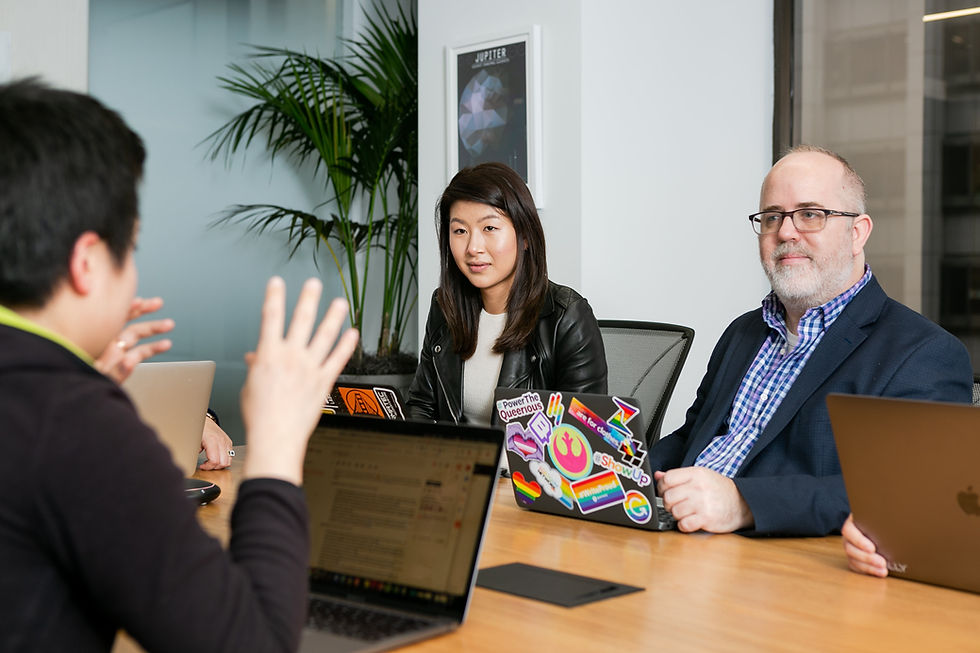How to Foster Collaboration Among Teachers in an IB School
- Kseniia Begma

- Sep 23, 2024
- 3 min read

Collaboration among teachers is the cornerstone of the International Baccalaureate (IB) Primary Years Programme (PYP). The IB philosophy emphasizes a student-centred approach, which requires educators to work cohesively to foster inquiry-based learning, interdisciplinary connections, and a holistic educational experience. In an IB school, where diverse perspectives enrich the learning environment, ensuring that teachers collaborate effectively can be transformative.
One of the primary challenges for coordinators is ensuring that collaboration is consistent, meaningful, and results-driven. Here’s why fostering collaboration is critical and practical tips on how coordinators can facilitate productive teamwork among teachers in a PYP school.
The Importance of Collaboration in the PYP
The PYP framework encourages students to become inquirers, thinkers, and risk-takers. To model these attributes, teachers must work together to create a learning environment that nurtures inquiry across disciplines. Collaboration allows teachers to:
Share best practices: By working together, teachers can share successful teaching strategies, discuss challenges, and co-create solutions, ensuring a continuous cycle of improvement.
Develop interdisciplinary units: The PYP encourages connections across subjects. Collaboration allows teachers to design units that integrate math, science, language, and other disciplines, giving students a richer and more cohesive learning experience.
Build a cohesive learning journey: When teachers collaborate, they ensure that learning objectives are aligned across different year levels, creating a smooth progression for students.
Foster a shared vision: Collaboration ensures that all teachers are working toward the same educational goals, whether it's fostering a global mindset or developing critical thinking skills in students.
Tips for Facilitating Collaboration in the PYP
As an IB coordinator, you play a crucial role in fostering a culture of collaboration. Here are some practical strategies to ensure that teachers work together effectively:
1. Establish Clear Communication Channels
Consistent and open communication is the foundation of any collaborative effort. Set up regular meetings or digital platforms where teachers can discuss ideas, share resources, and voice concerns. Use collaborative tools such as Google Workspace, Trello, or Slack to keep conversations organized and accessible.
2. Designate Time for Collaboration
One of the most common barriers to collaboration is time. Coordinators should advocate for dedicated planning periods or collaborative blocks where teachers can work together without other distractions. Whether it’s during weekly meetings, professional development days, or after-school sessions, ensuring that collaboration is scheduled shows that it is a priority.
3. Set Clear Expectations and Goals
Teachers need to know why they are collaborating and what the expected outcomes are. As a coordinator, define specific objectives for collaborative efforts, whether it's creating a transdisciplinary unit, refining assessment strategies, or developing new inquiry-based learning activities. Having clear goals helps focus the conversation and keeps collaboration purposeful.
4. Encourage Peer Observation and Feedback
One powerful way for teachers to learn from each other is through peer observation. Encourage teachers to visit each other’s classrooms, observe different teaching styles, and provide constructive feedback. This not only helps teachers reflect on their practice but also fosters a sense of community.
5. Foster a Growth Mindset Culture
A culture of collaboration thrives when there is trust, respect, and a shared belief in continuous improvement. Encourage teachers to embrace a growth mindset, where they see challenges as opportunities to learn. Acknowledge and celebrate collaboration successes, no matter how small, to keep motivation high.
6. Provide Professional Development Opportunities
Professional development sessions can be designed to focus on collaborative strategies. Bring in experts or use internal resources to train teachers on effective teamwork, communication, and inquiry-based practices. This gives teachers the skills they need to collaborate more effectively in the PYP environment.
7. Use Data to Drive Collaboration
Encourage teachers to use data as the foundation of their collaborative efforts. Whether it's student performance data, feedback from classroom observations, or results from formative assessments, data can help identify areas that need attention and spark productive discussions.
8. Model Collaboration
As a coordinator, it’s essential to lead by example. Collaborate with teachers in their planning, be open to feedback, and share your experiences with transparency. When teachers see leadership valuing and practicing collaboration, they are more likely to follow suit.
A Few Last Words
Collaboration among teachers is more than just a necessity in an IB school—it’s a powerful tool for creating a unified and enriching learning experience. By fostering a collaborative environment, coordinators can ensure that teachers support one another, share insights, and co-create meaningful learning experiences for students.
With effective communication, a clear vision, and the right support structures, collaboration becomes a driving force behind the success of both teachers and students in the PYP.
Learning Made Easy
The world of education is a dynamic one that continuously changes at a rapid pace. If you are curious about learning and staying up to date on everything teaching and education-related, visit my website to learn more today!




Comments